- Learning time
- 20 minutes
- First play time
- 40 minutes
Blitzkrieg!
Designed by: Paolo Mori
Blitzkrieg! is a two player war-game, a somewhat abstracted retelling of WWII – one player is the Axis, and the other the Allies, and both seek to steer the momentum of the conflict in their direction in order to emerge victorious.
The board shows five theatres of conflict across the globe, and within each one are several campaigns made up of action spaces. Each theatre of war measures progress on a battle track: a red cube representing momentum starts in the middle of the track, and when you play you’re trying to swing momentum away from the middle (neutral) and in your direction.
Players have a bag of cardboard chits representing their forces both land and sea, and draw three at the start of the game (kept secret). On your turn, you place a chit somewhere on any still-contested theatre of war, and draw a new chit from the bag. You must always place the chit on the left-most spot of any campaign, and when you do so, you first take the reward of the action space you filled (assuming there was one) and then move the momentum cube on the battle track according to the strength of the chit you placed there. If a campaign is complete, then whoever has swung the momentum to their side of the battle track scores points – both the points for the campaign itself and potentially bonus points depending how far you’ve swung momentum in your direction. If you push the momentum all the way to your end of the battle track, you immediately claim a total victory in that theatre: score any unclaimed points, and claim any unclaimed action space rewards!
Your chits are mostly values of 1, 2 and 3, consisting of tanks (that can only go on brown land spaces) ships (confined to blue sea spaces) and aircraft (that can be placed anywhere). Lurking among them are the potentially powerful General and Admiral, who can be devastating at the right time, or irritatingly out-of-touch top brass at the wrong time.
But although there is a modicum of luck in the draw, Blitzkrieg! is really won and lost on the action spaces, so let’s see what they do. Industrial Production allow you to draw extra tokens: not only does this permit you to increase your handsize, you can also react to the opponent depleting it when they take a Bombing action space, that forces chits back into the bag. Some spaces (Tactical/Strategic) grant extra momentum either on the theatre you’ve placed in or elsewhere, whereas Propaganda spaces simply score extra points. Potentially key are the Research spaces: these allow you to add extra (powerful!) chits to your bag, as the scientists on your side of the war come up with all manner of advancements. The catch is, you do need to hope they come out of the bag again!
As soon as either player reaches 25 points, the final round is triggered – if it’s the Allies, they’re victorious; if it’s the Axis, the Allies get one final turn with which to overhaul them. Most points after that wins the war – unless… if a player is unable to play a chit on their turn, either because they’ve been bombed to hell or don’t have a legal place to play, they instantly lose. So as well as being destructive in terms of hand-size, a bombing campaign can also be a direct route to victory…
Joe says
There are a few big, heavy war games I really enjoy, and there is a trend these days for compacting the theme and mechanics of these into a pocket-sized experience. But inevitably, an 'experience' is precisely the thing that ends up not being had. At least not a memorable one. The challenge between players is certainly there, but I can't help feeling 'so what?' at the end; and that feeling seems to be because of the purported theme, rather than in spite of it. I prefer games like this to wear their theme so lightly it's entirely forgettable - somehow that doesn't seem to work for me here. But there are a few, like the excellent Iron Curtain, that marry the micro experience and big theme brilliantly, so perhaps it's simply that I haven't found the gameplay of Blitzkrieg particularly engaging.
The guru's verdict
-
Take That!
Take That!
It's war.
-
Fidget Factor!
Fidget Factor!
Low. Blitzkrieg's box boasts that it's a World War in 20 minutes, and whilst that might sound like the most alarming Calendar notification ever, it is an accurate description of play-time after your first couple of battles on the board.
-
Brain Burn!
Brain Burn!
As noted in the description above, success in Blitzkrieg! is all about where you choose to fight and what rewards are available. There are nine different types of action spaces and how the war unfolds is part strategic (spread thinly, or go heavy in certain theatres and take hits elsewhere) and part tactical (change plans; spot opportunities!). Just enough luck to add to the edge of tension too.
-
Again Again!
Again Again!
It's fast-moving and fun for the right players. But critically it never falls into predictable patterns either.


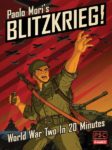
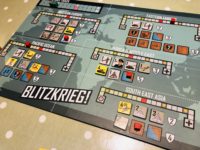
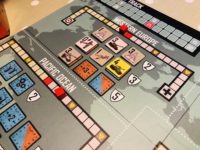
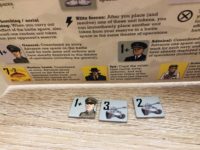
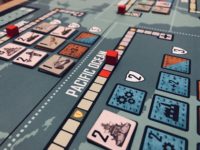




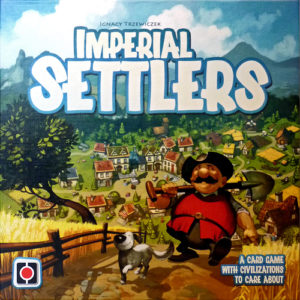
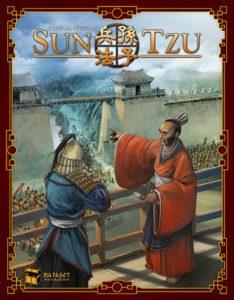

Sam says
How you feel about Blitzkrieg! may depend on how you feel about reducing a six year global trauma to a twenty-minute game. Although I understand that for some the theme isn't something they'd ever want to associate with play, personally I've no issue with anything that keeps world history, no matter how terrible, in our minds. Particularly the horrors of Nazi Germany. Admittedly Blitzkrieg doesn't have an educational slant outside of the overarching theme, and it doesn't immerse you in history to the same degree, for instance, that the-plot-to-kill-Hitler Black Orchestra or the event-led Hitler's Reich do. In terms of the game mechanics, this could have been called Mayonnaise! and portrayed fight over kitchen condiments. But if you're okay with the theme, then the game is a deftly constructed gem; an easy-to-learn, impossible to to master type affair that after a play or three starts to show more depth rather than less.